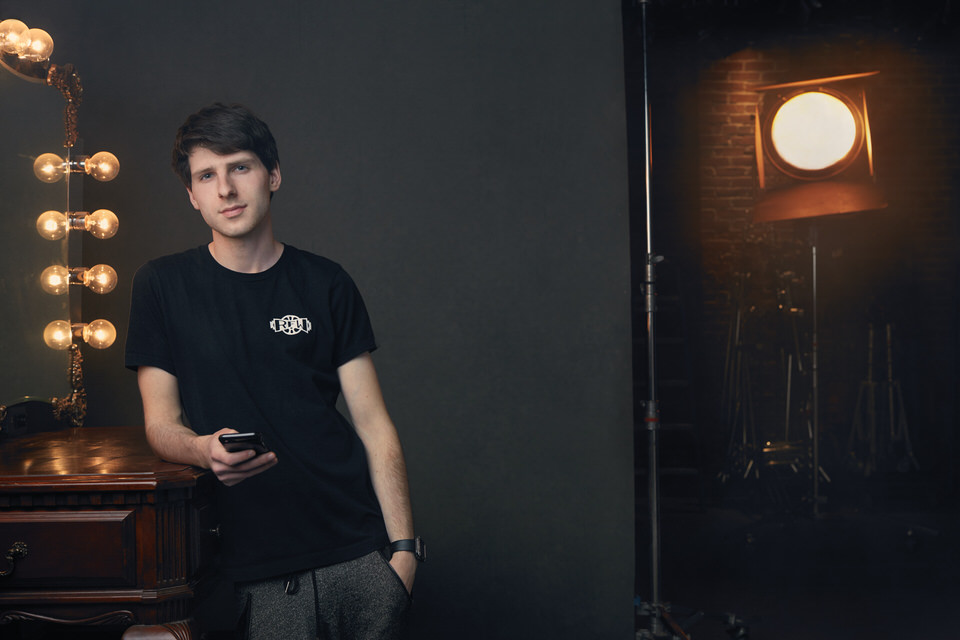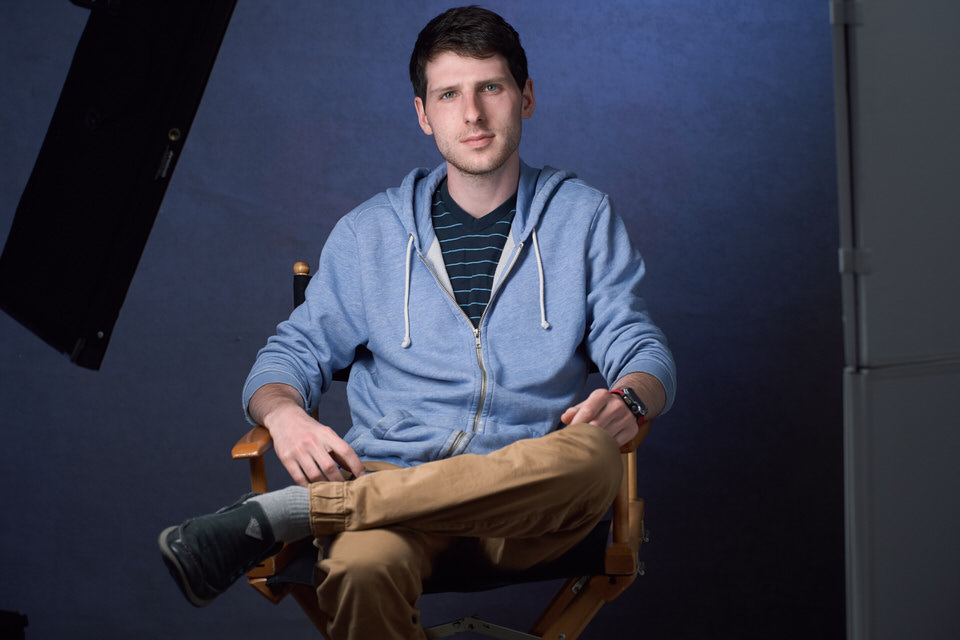Step Onto The Other Side Of The Camera
What does stepping on the other side of the camera have to do with your business?
It’s important to know what it is like to be in front of a camera, in order to experience the emotions of being on the other side. We as photographers can tell people what to expect during a shoot (and we do) but to actually experience it is a whole other concept. For instance, I naturally freeze up in front of the camera, which is something that 90 percent of my clients do as well. I thought it would be easy to take my own portrait and boy was I wrong!
So, even in my own studio, with no one else around, I was uncomfortable when I started my “session”. Imagine what it must be like for someone who has never met me, never been to a professional studio before, maybe never has had a professional photo taken in their lives. Imagine how they must be feeling. Doing this self-portrait session, really put everything into perspective. I now have much more empathy for my clients than I did before.

Having felt those feelings and talking myself through them, I am now better at talking my clients off the proverbial cliff when they need to be. I can communicate more clearly and from a better place of understanding. I felt the fear and confusion of being in front of a camera and because of that, I have more ability to be a better guide behind the camera.
What does being on the other side of the camera have to do with your life?
Something as simple as being in front of the camera can have great effects on your life and mental well being. Many people are afraid of, or just don’t like being in front of the camera, even photographers. I have been asking myself why that might be. Is it because people are afraid to look vulnerable? Perceive themselves as unattractive? Or maybe they are simply uncomfortable with putting themselves out there for the world to see. We become better and more aware as people when we push ourselves outside of our comfort zones and tackle more than what we are accustomed to doing. Even if you don’t think you feel any of these things, putting yourself in someone else’s shoes is an important tool for understanding what your clients might be feeling during a shoot.
Try JPEGmini Pro For Free Now!
Take the time to have fun and experiment.
Sometimes when you get into the habit of doing paid shoot after paid shoot you forget to allocate time for experimenting. Since you definitely don’t want to experiment with lighting, different camera settings, and setups while a client is there, experiment with all those things during a self-portrait session. Mix things up, lighting, settings, poses, and angles.

How well do you know your face?
I had no idea I preferred to be photographed on my right side, or straight on, as opposed to my left. This all changed once I began to experiment with being on the other side of the camera. By doing this alone in my studio, I created a safe place to try, to fail, and of course, delete unwanted photos. I took hundreds of photos of myself on my left side and tried over and over again to make it work, but I kept defaulting back to the right side, and straight on. I also figured out that it isn’t always as clear cut as to which side of your face you like more. It can be more nuanced and include which side of your face is brighter (or which side your key light is on) than the other. I learned something new about myself and I was able to abandon a preconceived notion that I had, thus also learning more about myself.
Can taking a self-portrait boost your confidence?
Since many people, even most photographers, don’t like having their photo taken, I like to think of this as a way to increase your confidence by facing your fears. Increased confidence can help you in many ways, but especially in your business.
From speaking to clients on the phone to creating instructional videos for your website, added confidence is always a good thing. Often times, I hear from my clients that they are feeling more self-assured about themselves after a shoot, simply by seeing themselves look as good as they do. I started thinking that if my clients feel good, and if it works for them, it can work for me.

What can be learned by filming yourself?
Another thing that I’ve become aware of since starting my business is that the way one talks to potential clients on the phone is very important. After all, first impressions are lasting impressions. If I can instill confidence through a phone conversation, I know I am off to a good start with the relationship. Our clients need to know that you will take care of them and they have nothing to worry about. Therefore, an exercise that I’ve forced myself to do once in a while is to film myself talking. Something as simple as watching how many times I say “ummm” can be very important for keeping the viewer engaged in what I am trying to convey. As I watch the video back, I can critique myself as to whether I stay on topic, if I explain myself fully, or if I am making any sense at all.
People want to see photos of you on social media, give them what they want!
Usually, the most popular photos photographers post on social media are not actually of their work, but instead photos of themselves. If my social media analytics are anything like yours, a majority of my followers are photographers. They are usually much more in tune with what looks good; opposed to everyday clients you may run into. By taking advantage of the audience you have, you can really see what works, and what doesn’t, so that when a paid shoot comes your way, you are ready to go.

Doing this lets people know that you practice what you preach. I always talk about how you need to keep your photos updated. I want people to see me and what I look like.
Give it a try!
As you can see, no harm can be done by stepping into your client’s shoes, pushing yourself outside of your comfort zone, and understanding that learning and knowledge are powerful tools. So, get on the other side of the camera and create an amazing photo (or video) of yourself!
